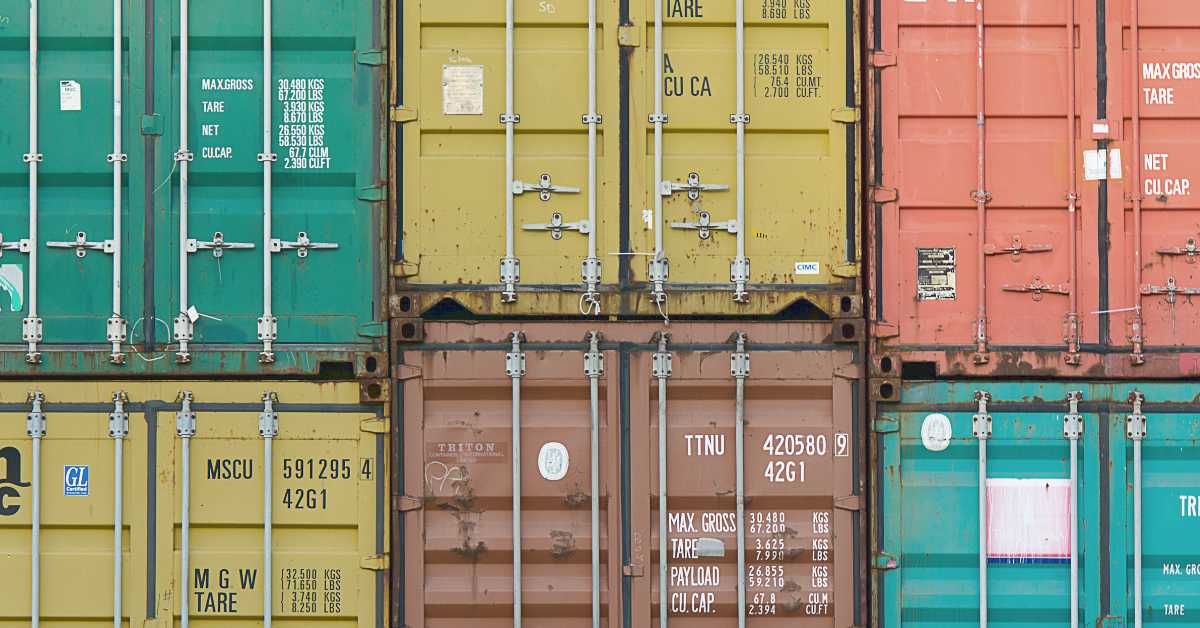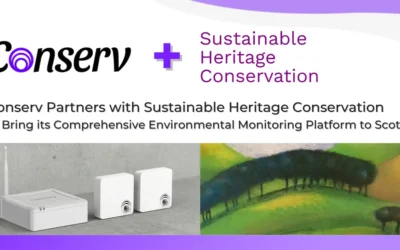Traveling art exhibits present unique challenges for collections care professionals. The constant movement of artworks increases the risk of environmental fluctuations, such as temperature and humidity changes, which can adversely affect the condition and longevity of delicate pieces. The jostling and handling of the objects during loading and transport can also cause enough constant vibration and shock to damage the art.
Having a data logger with your artwork will help you figure out what is going on in the crates during transport for loans and traveling exhibitions. Having wireless data loggers specifically will make the downloading process much faster and easier. So how do you choose the right wireless data logger for your traveling art exhibits?
Understand monitoring requirements for a traveling art exhibit
Before selecting a wireless data logger, it’s crucial to evaluate your specific monitoring needs. Consider the following factors:
- Environmental Parameters: Identify the environmental parameters you need to monitor, such as temperature, humidity, light levels, and movement. Artworks may have specific tolerances for these factors, making it vital to choose a data logger that can accurately measure and record them. Make sure you choose a data logger that actually has all of these sensors within the same device (like the Conserv sensor). Otherwise, you will have to get several different loggers for each parameter of interest.
- Data Collection Frequency: Determine how frequently you need to collect data. While many data loggers offer real-time monitoring for static circumstances, this might not be available during transit when there is no gateway to upload the collected data to a server. Choose a device that aligns with your monitoring schedule. How long will your transport take? Make sure your battery will hold out.
- Data Storage Capacity: Assess the required data storage capacity based on the duration of your exhibits and the frequency of data collection. Ensure the logger can store a sufficient amount of data without compromising accuracy. Check your settings to avoid accidentally storing new data over old data if the device runs out of space.
Consider wireless communication options
Wireless data loggers normally offer the advantage of remote accessibility and real-time monitoring. While these aspects may not be immediately available during transportation, these two characteristics will make your life much easier once you arrive at your final destination.
A wireless data logging system will allow you to log data before, during, and after the move more seamlessly. Being able to know what the conditions are inside your crate versus the conditions at the new site without having to open the boxes can help you decide if you have waited long enough before exposing the objects to a potentially different environment. This could help prevent any shock that could lead to mechanical damage (such as warping or cracking of wooden objects).
Additionally, with so many things to worry about during a traveling art exhibit or loan, the last thing you may want to do is to have to go around manually downloading USB data loggers for your report.
Battery life and power options
To ensure uninterrupted monitoring during traveling art exhibits, consider the battery life and power options offered by the data logger you choose.
Assess the estimated battery life of the data logger, considering both standby and active monitoring durations. A longer battery life reduces the need for frequent battery replacements and minimizes the risk of data gaps. Remember it is possible to extend the life of your battery by reducing the time in between readings.
If you intend to leave the same data logger with your objects throughout the period of the loan or traveling exhibition, it would be ideal to avoid having to change batteries halfway through as you risk losing information or introducing errors in the readings.
In the specific case of wireless data loggers, they are normally transmitting the data to a gateway which is the device that ultimately uploads the information to the online server or cloud. Gateways are generally plugged into the wall for their electricity requirements. While wireless data loggers will be logging information constantly with their own internal batteries, make sure that your gateways have ways to upload your data even if there is a power outage. In these cases, you are looking for battery backups or any other properties that allow your gateway to continue uploading real-time data throughout an unexpected power outage.
Data analysis and reporting capabilities
Efficient data analysis and reporting are essential for collections care professionals in the middle of a traveling exhibit. Look for data loggers that offer the following features:
- Compatibility: Ensure the data logger is compatible with software or platforms that allow for easy data retrieval, analysis, and reporting. If you decide to go for wireless data loggers for your traveling art exhibit, make sure that you will be able to access your data at both ends of your trip. Whether you have Wi-Fi, Bluetooth or LoRaWAN data loggers, the last thing you need is to arrive at your destination and find out that you do not have the software/hardware you require to download your environmental monitoring data. Most institutions will not allow you to just download external software to their computers or connect to their local WiFi without some negotiation and pre-approval, so if your data needs a specific program (like with TinyTag or TandD data loggers), make sure to arrange for a connection and/or bring your own laptop to process your data. If you’d rather not have to do this, Conserv’s environmental monitoring platform is entirely web-based and accessible from any computer, tablet or smartphone with an internet connection. Conserv’s gateway will not need to connect to anyone else’s WiFi and will start working as soon as it’s plugged in.
- User-friendly interfaces and intuitive data visualization tools can streamline the decision-making process and enhance data interpretation. Only IPI’s eClimateNotebook and Conserv Cloud have been designed especially for collections care purposes. Their reporting capabilities and features will align much better with your needs than general cloud software that has been designed for other industries.
- Consider real-time alerts: This is quite common with wireless data loggers now. Opt for systems with customizable alerts that will notify you of abnormal environmental conditions. Timely alerts will allow staff to take prompt action and minimize the risk of damage to the artworks during their stay at another institution.
- Sharing capabilities: Although this feature is more related to the software than the wireless data loggers themselves, it will be ideal for traveling art exhibits if all key players can access the environmental monitoring data. This feature might be harder to get with USB data loggers that rely on manual data upload as that software might not be designed for sharing. When choosing wireless data loggers with this feature in mind, keep an eye on the number of allowed software users and match it to your needs. If you still must have USB data loggers, remember that both eClimate Notebook and Conserv Cloud will let you upload .csv files to the software for free. Conserv Cloud also allows you to add unlimited users to access your data while the latest eClimate Notebook will limit the number of users depending on your subscription level.
Conclusion
Choosing the right wireless data logger for your traveling art exhibits is a critical step that can save you invaluable time and reduce friction during a stressful event. Courier officers, conservators, registrars, and even security or insurance agents may benefit from a seamless system that monitors environmental conditions and reports data in real-time.
By understanding your monitoring requirements, evaluating wireless communication options, assessing battery life and power options, and ensuring robust data analysis and reporting capabilities, you can make an informed decision before you buy.
Remember that each exhibit may have unique needs, so adapt your selection process based on the specific requirements of your collections. By incorporating wireless data loggers into your collections care practices, you can enhance the protection of your traveling art exhibits and ease the work of your staff.
If you have any questions about environmental monitoring, integrated pest management, or just want to talk about preventative conservation, please reach out to us! Don’t forget to check out our blog or join our community of collections care professionals where you can discuss hot topics, connect with your peers or even take a course to get familiar with the Conserv platform.




